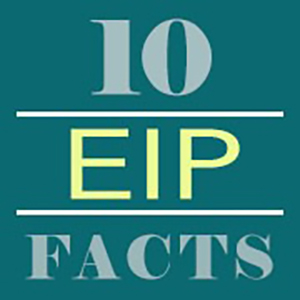
Economic Impact Payments (EIPs) are being sent out to Americans to help stimulate the economy and mitigate the financial fallout from the COVID-19 pandemic. Perhaps you’ve received one or you’re still waiting for one to arrive in the mail.
People have many questions about these payments. To help answer them, here are 10 quick facts about the EIPs.
1. Millions have been paid already. The payments were authorized by the Coronavirus Aid, Relief and Economic Security (CARES) Act. They began in April and as of June 3, the IRS reports that 159 million EIPs were processed.
2. Payments vary based on household size. EIPs are up to $1,200 for each eligible individual or up to $2,400 for married couples filing jointly. In addition, the payments include an additional $500 per “qualifying child.”
3. Only some people are eligible. You must be a U.S. citizen or U.S. resident alien. In addition, you can’t be a dependent of another taxpayer, and you must have a work-eligible Social Security number. To receive a full payment, you can have adjusted gross income (AGI) up to:
-
- $150,000 for married couples filing joint returns,
- $112,500 for head of household filers, and
- $75,000 for all other eligible individuals.
There’s a 5% reduction in an EIP if your AGI is above these amounts.
4. Some other people definitely aren’t eligible. Examples of ineligible people are nonresident aliens, incarcerated individuals and people who have died (see right-hand box). People with income above the amounts listed above may get a partial payment. But you won’t qualify for any payment if you don’t have any qualifying children and your AGI is greater than:
-
- $198,000 for married couples filing jointly,
- $136,500 for heads of household, and
- $99,000 for all other eligible individuals.
5. EIPs may be paid by direct deposit, a paper check or a debit card. If the IRS has current bank account information for a taxpayer, a deposit may be made into his or her account. In other cases, paper checks mail may be mailed. Finally, some payments may be sent on prepaid debit card. At this time, taxpayers can’t request to receive debit cards.
6. Be aware that EIP debit cards come in a plain envelope. If you receive an EIP card, it will arrive in a plain envelope from “Money Network Cardholder Services.” The Visa name will appear on the front of the card and the back of the card has the name of the issuing bank, MetaBank®, N.A.
Some people who received debit cards thought they were junk mail and threw them away. If you’ve lost or destroyed your EIP Card, you may request a free replacement through MetaBank® Customer Service. The standard $7.50 fee will be waived for the first reissuance of a card. (An initial reissuance fee charged to a customer earlier will be reversed.) Individuals don’t need to know their card numbers to request a replacement. Call 800-240-8100 and choose option 2 from the main menu.
7. There are a number of requirements to qualify for an extra $500 for a child. For example, the child must be under the age of 17 at the end of the taxable year and be a dependent of the individual eligible for the payment. Alternately, the child must be permanently or totally disabled. The child must have lived with the individual eligible for the EIP for more than half of the tax year. The child must also have a valid Social Security Number or an Adoption Taxpayer Identification Number.
If dependents are 17 or older, they don’t qualify for the additional $500. This includes parents or other relatives, as well as college students.
8. You don’t have to file a tax return to get a payment. Millions of low-income people and others aren’t required to file a tax return but may be eligible to receive a payment. They can register to receive one by using the IRS Non-Filers tool.
9. Scam artists are trying to use EIPs to steal personal information or the payments. The IRS warns that it won’t call, text, email or contact you on social media to ask for personal or bank account information. Also, beware of emails with attachments or links claiming to have information about EIPs or refunds.
10. Currently, there are no solid plans for a second payment. If you’re planning on getting another payment from the federal government, you should hold on. A bill providing another round of payments was passed by the U.S. House of Representatives in May (the HEROES Act), but it hasn’t passed the Senate at this time. The White House has indicated that it would like to provide more aid to businesses and individuals, but no concrete plans have been announced.
Still Have More EIP Questions?
The IRS has answered many questions on an EIP Information Center on its website. Please do not hesitate to contact us for more information on EIPs and please visit our COVID-19 Updates & Resources page for more related relief measures.
© 2020




